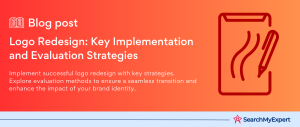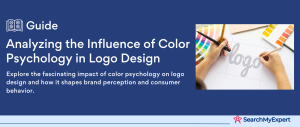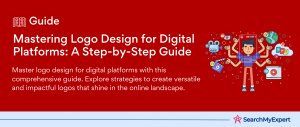Understanding Brand Identity in Logo Design
The Power of Logos in Shaping Brand Identity
In today’s fast-paced digital world, a brand’s logo is much more than a mere graphic design; it’s the face of the company, a visual representation of its identity and values. As the cornerstone of brand identity, logos hold immense power in influencing audience perception and establishing a company’s presence in the consumer’s mind. This is not just about aesthetics; it’s about communication, with each design choice speaking volumes about the brand’s ethos, mission, and personality.
Exploring the Impact of Logo Design on Brand Identity
In this comprehensive exploration, we delve into the intricate world of logo design and its profound impact on a brand’s identity. Our journey will uncover how different design elements – from color and typography to symbolism and beyond – play a crucial role in crafting a logo that resonates with the target audience and stands the test of time. Whether you’re a budding entrepreneur, a seasoned marketer, or simply curious about the power of logos, this article promises to offer valuable insights into the art and science of logo design and its significance in brand storytelling.
Unraveling the Essence of Brand Identity
Brand identity is the soul of a company, encompassing its core values, mission, and the unique personality that sets it apart in a crowded marketplace. It’s not just a logo or a catchy slogan; it’s the comprehensive expression of a brand through its visual and verbal communication, deeply influencing how customers perceive and interact with it.
Core Values: The Guiding Principles
The core values of a brand are its fundamental beliefs and guiding principles. They act as the compass that steers all business strategies and decisions, reflecting what the brand stands for. These values range from a commitment to sustainability, dedication to innovation, or a focus on customer satisfaction. They form the bedrock of the brand, ensuring consistency and authenticity in all its endeavors.
Personality: The Human Touch
A brand’s personality is akin to a human character. It’s a set of human traits attributed to the brand, making it relatable to its audience. Is the brand friendly and approachable, or sophisticated and exclusive? The personality of a brand plays a pivotal role in determining its voice, tone, and overall communication style, which in turn influences customer perception and loyalty.
Mission: The Driving Force
The mission statement articulates the brand’s purpose – its reason for existence beyond making a profit. It’s a clear declaration of what the brand aims to achieve and how it plans to add value to its customers’ lives. This mission drives the brand’s long-term goals, helping to align its strategies and actions with its overarching vision.
Elements of Brand Identity: Crafting a Cohesive Image
- Brand Voice: The brand voice is how a brand communicates with its audience. It’s the language, tone, and style used in all written and spoken communication. This voice should be consistent across all platforms, reinforcing the brand’s personality and values.
- Target Audience: Understanding the target audience is crucial in shaping a brand’s identity. This involves knowing the demographics, preferences, and behaviors of the people the brand aims to attract. Tailoring the brand’s message to resonate with this audience is key to building a strong connection.
- Brand Story:
The brand story narrates the brand’s journey, challenges, victories, and evolution. It’s a powerful tool to engage and connect with the audience on an emotional level, giving them a glimpse into the brand’s ethos and making them a part of its journey.
The Power of Logos in Branding
Logos: The Visual Cornerstones of Branding
Logos serve as the quintessential visual element in branding, encapsulating the brand’s essence in a simple yet impactful graphic. These symbols are not just artistic creations; they are strategic tools of visual communication, designed to convey a brand’s identity, values, and mission at a glance.
Visual Communication: Beyond Aesthetics
The power of a logo lies in its ability to communicate complex ideas and emotions quickly and effectively. A well-designed logo can:
- Convey Brand Values:
Through its design, a logo can reflect a brand’s core values. For example, a logo with earthy tones and organic shapes may convey a brand’s commitment to sustainability. - Establish Brand Recognition: A distinctive logo helps create a memorable image in the consumer’s mind, aiding in quick recognition and recall.
- Differentiate from Competitors: In a crowded market, a unique logo helps a brand stand out, distinguishing it from its competitors.
- Build Trust and Credibility:
Professional and well-thought-out logos can enhance a brand’s perceived value and credibility in the eyes of the consumer.
Psychological Impact of Logo Design
The psychology behind logo design plays a crucial role in how it is perceived. Key aspects include:
- Color Theory: Colors evoke emotions and convey messages. For instance, blue often represents trust and professionalism, while red can evoke feelings of excitement and passion.
- Shapes and Lines: The shapes used in a logo can have a significant impact. Circular shapes may represent unity and harmony, while angular shapes can convey stability and efficiency. Lines, whether curved or straight, can also influence perception; for instance, curved lines often imply comfort and ease.
- Symbolism:
Symbols can be a powerful way to convey a brand’s story and values. For example, a tree might symbolize growth and stability, while a mountain could represent adventure and endurance. - Typography:
The style of font used in a logo influences how the brand’s message is communicated. A serif font might convey tradition and reliability, while a sans-serif font can appear modern and approachable.
Crafting a Logo That Echoes Brand Identity
Designing a logo that truly reflects a brand’s identity is a meticulous process that begins with a deep understanding of the brand and culminates in a visual symbol that encapsulates its essence. This journey, from conception to creation, involves critical phases that ensure the final logo is not just visually appealing but also strategically aligned with the brand’s core identity.
The Discovery Phase: Laying the Foundation
The discovery phase is a critical starting point in the logo design process. It involves:
- Understanding the Target Audience: Knowing who the logo is meant to appeal to is crucial. This includes demographics, preferences, and behaviors of the brand’s intended customers.
- Identifying Core Values:
A thorough understanding of the brand’s values, mission, and personality ensures that the logo aligns with and communicates these elements effectively. - Analyzing Competitors:
Studying competitors’ logos provides insights into industry trends and helps in creating a logo that stands out in the market. - Gathering Inspiration:
This could involve looking at industry trends, historical references, or any other sources that might spark creative ideas.
Sketching and Brainstorming: The Creative Process
Once the foundational understanding is established, the next step is to translate these insights into visual concepts. This phase includes:
- Brainstorming Sessions:
These are collaborative meetings where ideas are freely exchanged. It’s about thinking outside the box and considering various perspectives. - Sketching Ideas: Translating ideas into sketches is a fundamental part of the creative process. It allows designers to explore multiple concepts quickly and intuitively.
- Refining Concepts: From the initial sketches, promising ideas are further refined. This involves considering how different design elements like colors, shapes, and typography can be combined to best represent the brand.
- Feedback Loop: Presenting these concepts to the stakeholders and incorporating their feedback ensures that the logo aligns with the brand’s vision and expectations.
- Iterative Design:
This is a process of making incremental changes to the designs based on feedback, ensuring that every aspect of the logo is fine-tuned to perfection.
Navigating Key Decisions in Logo Design
Creating a logo that effectively represents a brand involves making several critical decisions, each of which plays a significant role in how the logo is perceived and received by the audience. Two of the most crucial aspects of this process are selecting the right logo style and choosing an appropriate color palette and typography.
Choosing the Right Style: Matching Logo with Brand Identity
Different logo styles serve different purposes and resonate differently with various target audiences. The key styles include:
- Wordmark Logos:
This style consists of the brand name in a stylized typeface and is ideal for companies with a unique name that they wish to emphasize, such as Google or Coca-Cola. - Pictorial Logos:
These are iconographic images that are easily recognizable and represent the brand through a visual image, like Apple’s apple or Twitter’s bird. - Abstract Logos:
Unlike pictorial logos, abstract logos are geometric forms that don’t represent an immediately recognizable image but rather a concept or idea, like the Nike swoosh or the Adidas stripes. - Combination Marks: These logos combine a wordmark and a symbol or icon, offering the flexibility of using them together or separately. Examples include the Starbucks logo and the Burger King logo.
- Emblem Logos:
These logos have a traditional appearance and often consist of a font inside a symbol or an icon; think of badges, seals, or crests. Examples include Harley-Davidson and Starbucks (older version).
Color Palette and Typography: Influencing Brand Perception
- Color Psychology: Colors have the power to evoke emotions and set a tone for the brand. For example, red can evoke excitement and passion, while blue can convey trust and professionalism. The chosen color palette should align with the brand’s personality and the message it wants to convey.
- Font Selection:
The choice of typography in a logo plays a crucial role in communicating the brand’s character. Serif fonts, like Times New Roman, suggest tradition and respectability, while sans-serif fonts, like Helvetica, are seen as modern and clean. Script fonts, on the other hand, can convey elegance and creativity. - Combining Colors and Fonts:
The combination of color and typography should complement each other, creating a cohesive look that enhances the brand’s overall aesthetic and message. This combination should be versatile enough to work across various mediums and scales.
Case Studies: Dissecting the Success of Iconic Logo Designs
Analyzing real-world examples of successful logo designs offers valuable insights into how these visual symbols can powerfully convey a brand’s identity. Here, we’ll deconstruct the logos of several well-known brands, understanding the elements that contribute to their effectiveness and the lessons that can be gleaned for effective branding.
Apple Inc.
- Logo Design:
The Apple logo is a simple, yet instantly recognizable image of an apple with a bite taken out of it. - Brand Communication: The bitten apple is unique and memorable, symbolizing knowledge, innovation, and a touch of playfulness.
- Lesson Learned:
Simplicity in design can lead to powerful brand recognition. A unique, yet simple image can become deeply ingrained in public consciousness.
McDonald’s
- Logo Design:
The golden arches are one of the most famous logos globally. - Brand Communication: The arches are reminiscent of the letter ‘M’ and convey a sense of warmth and familiarity.
- Lesson Learned:
A logo can become a symbol of the brand experience itself (in this case, quick and consistent service), making it a powerful tool in brand identity.
Nike
- Logo Design:
The Nike ‘Swoosh’ is a simple, fluid line that represents movement and speed. - Brand Communication:
The Swoosh symbolizes athleticism, performance, and dynamism. - Lesson Learned:
A logo can embody the brand’s values and aspirations. Nike’s Swoosh reflects its commitment to performance and excellence.
Coca-Cola
- Logo Design:
The flowing script of the Coca-Cola wordmark is iconic and universally recognized. - Brand Communication:
The script conveys tradition and nostalgia, while its red color is vibrant and inviting. - Lesson Learned:
Consistency over time strengthens brand recognition. The Coca-Cola logo has remained largely unchanged for decades, reinforcing its brand identity.
Amazon
- Logo Design:
Amazon’s logo features a simple wordmark with an arrow pointing from A to Z. - Brand Communication:
The arrow represents the idea that Amazon offers everything from A to Z and also resembles a smile, suggesting customer satisfaction. - Lesson Learned: A logo can convey multiple aspects of a brand’s identity – in Amazon’s case, the breadth of its offerings and its focus on customer happiness.
Cementing Your Brand’s Legacy with Thoughtful Logo Design
As we reach the conclusion of our exploration into the world of logo design, it’s clear that understanding and reflecting a brand’s identity through its logo is not just an aspect of aesthetic appeal, but a fundamental component of successful branding. A logo serves as a visual shorthand, capturing the essence of a brand and forging an immediate connection with its audience.
Recapping the Role of Logos in Brand Identity
Logos are much more than mere symbols; they are the embodiment of a brand’s values, mission, and personality. They communicate these aspects at a glance, bridging the gap between the brand and its audience. Through various design elements such as color, typography, and style, logos tell a story, evoke emotions, and create lasting impressions. The case studies of iconic brands have illustrated how effective logos can transcend mere imagery to become powerful tools of brand recognition and loyalty.
A Call to Action: Embrace the Power of Logo Design
For businesses and entrepreneurs, the message is clear: investing in thoughtful, well-crafted logo design is not a luxury but a necessity. It’s an investment in your brand’s identity and, ultimately, its success. Whether you are starting a new venture or looking to rebrand, consider the principles and lessons outlined in this guide. Approach logo design not just as a creative task, but as a strategic endeavor that can significantly impact your brand’s perception and performance in the marketplace.
Conclusion:
In conclusion, the journey of creating a logo that truly reflects a brand’s identity is intricate and multi-layered. From understanding the brand’s core values and mission to choosing the right design elements like style, color, and typography, every step is pivotal. The real-world case studies of iconic brands like Apple, McDonald’s, Nike, Coca-Cola, and Amazon provide invaluable lessons in simplicity, symbolism, and consistency. These examples illustrate that a well-designed logo is a powerful tool in storytelling, capable of conveying a brand’s essence and forging a deep, emotional connection with its audience.
For brands embarking on this creative journey, the key is to blend aesthetics with strategy, ensuring that the logo not only captures attention but also encapsulates the brand’s unique identity and values. As we’ve seen, a thoughtfully designed logo can become an enduring symbol of a brand’s legacy and a beacon of its future aspirations.
Work with the best in the industry –
Logo Design Agencies for exceptional logos.
Table of Contents
Toggle






